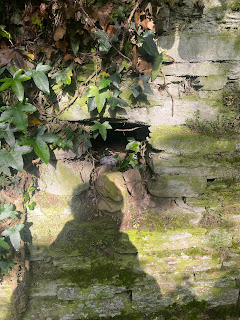Off to Triacastella and the monastery of Samos
The state of Galicia, which capital is Santiago de Compostella, is probably the most mysterious state along the Camino. Like no where else in Spain pre Christian thinking and cultures from up to 4000 years before Christ have left their marks on this beautiful state.
The most significant traces were left by the Celtics from 500-135 BC. They influenced the language and gave the name of the state. The little museum village O Cebreiro and the monastery of Samos are the most significant spots before Santiago de Compistella.
Last night I saw a photograph of the O Cebreiro village 100 years ago and it looks almost the same: round celtic huts and stone ways.
The Camino takes a constant up and down in the beginning passing the famous San Roque pass with its pilgrim statue. I thought it was much bigger and am somehow surprise how little it looks this time. The last climb of the day ( so I thought) was the steep little path up to the Alto do Polo. I cant get enough of the wonderful sights of this mountain range.
The first hour downhill is somewhat a release, but then my knees start to hurt and I partly walk backwards. Triacastella is in sight and still 5 km away. When I enter the village finally I realize the funny words of bars and hotels, many containing the letter X - remains of the Celtic history of this region.
I almost want to stay here but am thinking: it’s only 9 km to Samos and off I go.
Those 9 km though are tough: very steep up and downhill paths leading Zickzack along the mountain range and the river. This is way tougher than I expected. They developed the way well I keep thinking looking at the wooden bridges built long the road for us pilgrims - and before I know it I slide on one of the wooden bars which are still wet from last nights thunderstorms and fall on both knees. I jump up and hope that nobody saw me, did not eben check the damage on my knees - so stupid: whom am I trying to impress?
The Camino continues through a spooky deserted village called Vigo do real. All buildings are visibly made not passable with wooden shelters covering doors and windows. However the cemetery at the end of the village with only about 30 graves has fresh flowers - somebody must still come out here..
I finally spot Samos in The Valley and pass by the monastery wall - there I see a whole in the wall - perfect for my mother’s stone overlooking the monastery founded in the 6th century. My bag feels so much lighter even though it was just a tiny beautiful stone crafted by my friend Monika.








Kommentare
Kommentar veröffentlichen